Your cart is currently empty!
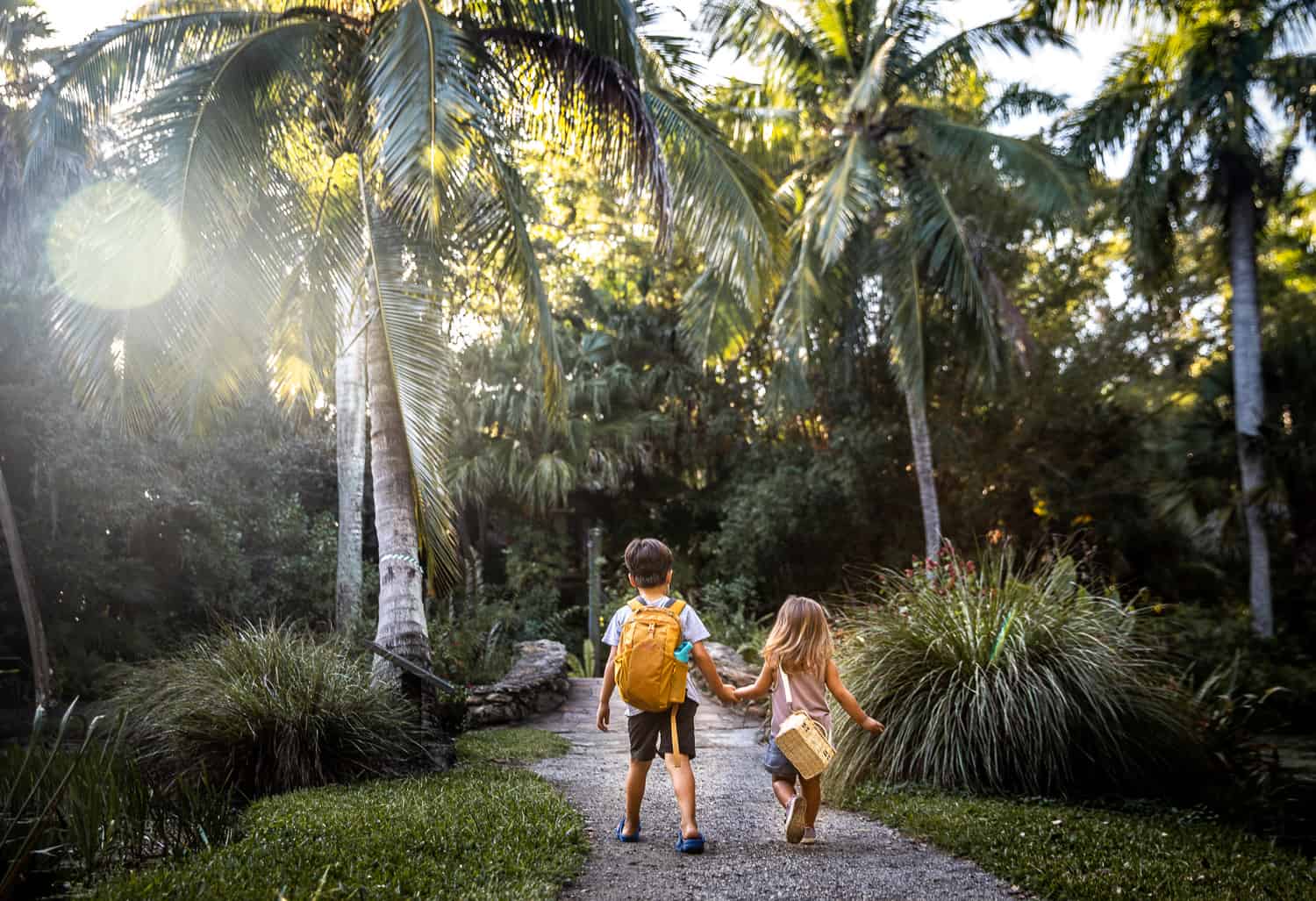
Navigating the World of Adventure Schooling
If you’ve ever noticed that your kids learn more when outside and doing fun things they love, then you’ve discovered the magic of adventure schooling. In this post, we’ll be guided through the concept of adventure schooling by the wisdom of two adventurous homeschooling moms who have combined their love of outdoor adventures with education in creative ways. Adventure schooling moms Nichole Holze and Lea Reynolds share their experiences, tips, and strategies for incorporating more adventures into your kids’ schooling. Their insights and advice will provide a roadmap for parents everywhere (whether homeschooling or traditional schooling) to infuse their children’s education with the magic of the great outdoors and fun adventures. From transforming nature walks into biology lessons to turning camping trips into living history excursions, these moms have mastered the art of making every outdoor adventure an opportunity for discovery and growth.

Adventure schooling
Adventure + homeschool = adventure schooling
Some moms might say homeschooling in and of itself is quite an adventure, but when you add a healthy dose of nature and exploration to the equation, you get something incredibly unique and special.
In recent years, an increasing number of families have chosen to break away from the traditional education system, opting for a more personalized and adventurous approach to learning and homeschooling. Adventure schooling is an innovative educational model that goes beyond the confines of the traditional classroom and encourages families to get out there and explore the world around them and use the outdoors as their children’s classroom.
In this article, we will dive deep into the realm of adventure schooling and explore ways you can take your homeschool classroom outside. We’ll get perspectives from two moms about what adventure schooling means to them and the how and why behind their choice to “adventure school” their children.
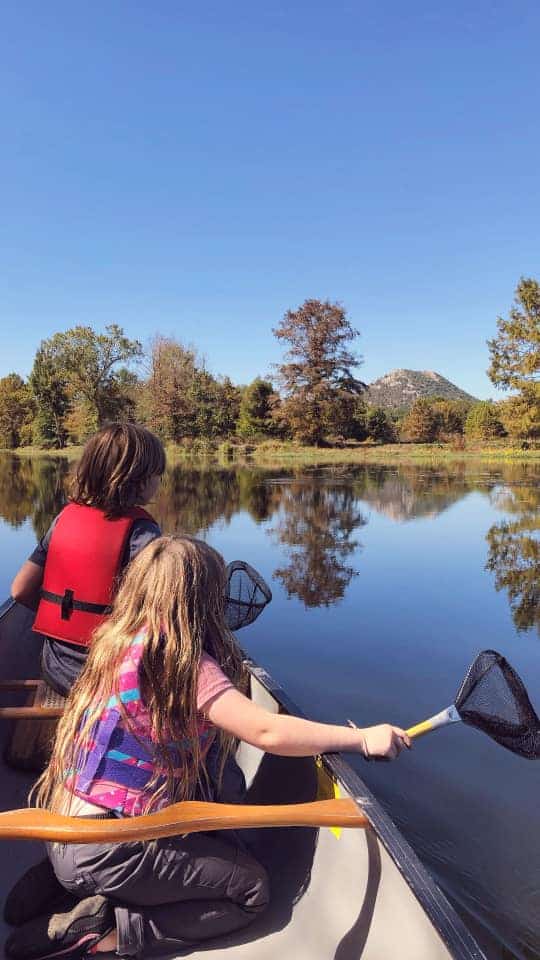
Nichole’s adventure schooling story
Nichole – @coleyraeh
We decided to homeschool from the very beginning of our children’s education. While that’s the right thing for us, I will never claim that it is the best for everyone. Each family is wonderfully unique, and each child’s needs are equally unique. That said, our choice to homeschool was the catalyst for what I call adventure schooling.
From the time my youngest was only a few months old, I had a deep desire to get out of the house and disrupt the grip of postpartum depression that pulled at me. Our first adventures merely involved me successfully getting out of the house with both kids, snacks, water, and the diaper bag. We usually hit a nearly park or playground and may have only stayed at the park (which was five minutes away) for thirty minutes. But, with two small kids, this was a huge victory and as I kept going, with little adventures around town, I strengthened my adventure muscles so that we could do bigger and more adventurous outings.
When we decided to homeschool, I already had plenty of experience taking my kiddos on adventures by myself. So, it was a natural progression for me to schedule adventure into our homeschool week. It’s all part of a process I call being responsibly brave. Now, years into our homeschooling experience, I still incorporate an “adventure day” into our schedule.
In a nutshell, adventure day is one day per week that I set aside to chase shenanigans with my children. It’s not meant to be a field trip. It is not a day to play with friends (although friends are always welcome to come along). It doesn’t have to be an entire day. This can be in the morning, an afternoon, or even an intentional hour or two where our focus is on exploring or doing something together instead of schoolwork or other things on our to-do lists.
These adventures can be anything from visiting a local park or trail, to a museum, a day trip, or even big day hikes or camping trips. It’s anything at all. Mostly, it’s an opportunity for us to connect through doing something together, and I am so grateful we started it. I have years’ worth of memories and photos of my kids with our various dogs under this one specific tree on a trail we hike almost weekly. It’s simple, but it’s beautiful.
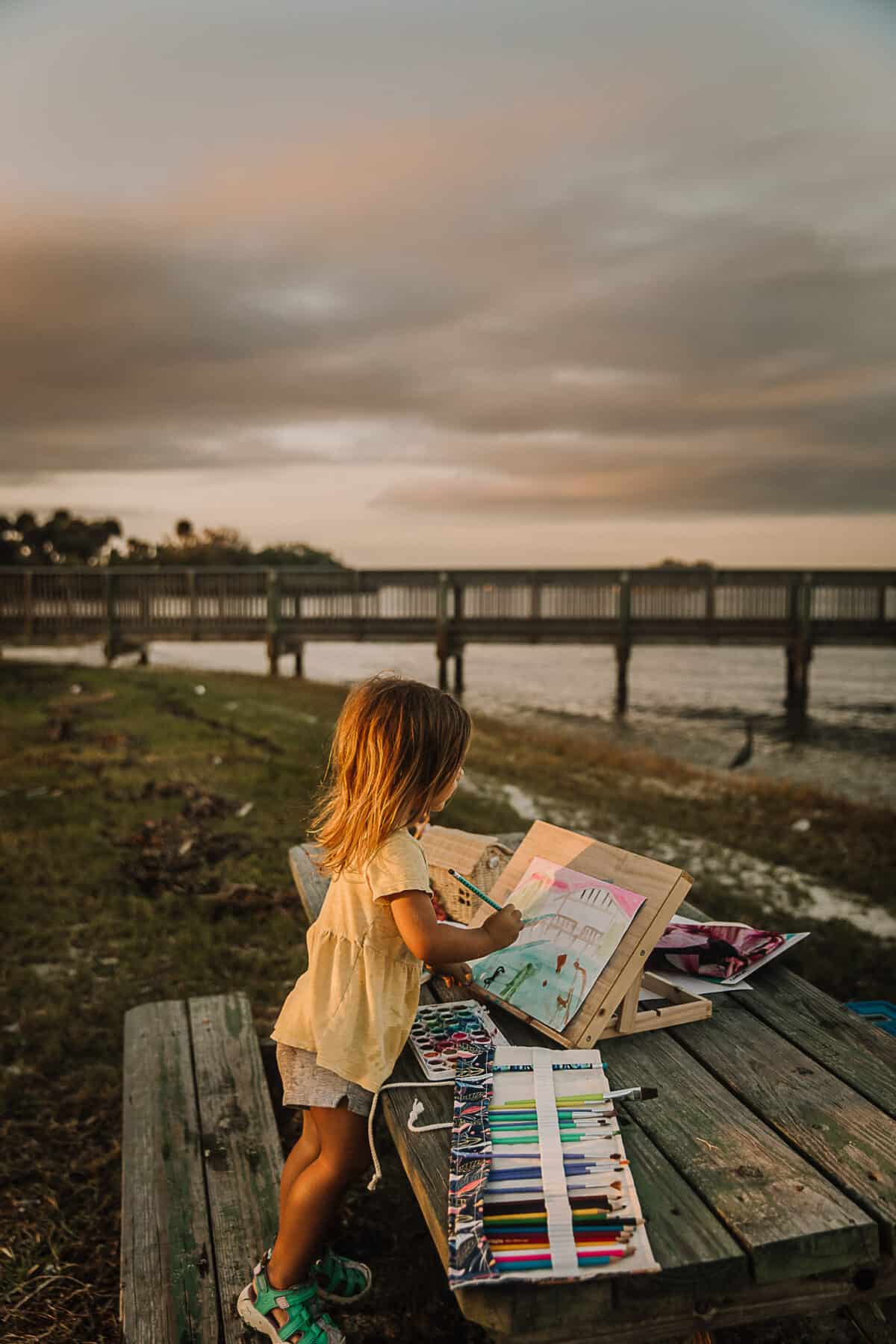
Lea’s adventure schooling story
Lea – @wildstokefam
I had no plans to homeschool my children. I was a full-time working Registered Nurse in the busiest hospital in town. But when my 4-year-old son was due to enter pre-school, my husband and I were nervous about him leaving the comforts of our sides and attending school every day. I was full of fear, anxiety, and excitement at the same time. I was excited that he would make friends, learn, and be surrounded by the fun of school. As a child, I loved school, which was filled with learning, fun, and friends. However, I was also a nervous wreck. He’s my baby, and the thought of sending him off to school for 7 hours on his own was overwhelming. How on Earth was I supposed to let him go to school all day?
But we swallowed our fears and got ready to register him for preschool. Only to be told that there were 15 children on the waitlist for preschool ahead of us. 15! The odds of him getting into preschool were not in our favor. The next closest school with availability was a 25+ minute drive from our home, each way. And while that was technically doable, the thought of spending almost two hours every day in the car (with our littlest in tow), was mind-boggling. And this is where the idea of homeschooling first came into mind.
At first, I was terrified of the idea of homeschooling. I am a nurse by trade, so my expertise is in everything medical and human anatomy. Regarding homeschooling, I was really worried about failing him and not teaching him enough of what he was “supposed” to learn. I spent many long nights researching, reading, and studying how to teach my child preschool material in a way that worked for both of us.
Soon, I discovered there were quite a few wonderful homeschool groups in my area. I fell in love with countless homeschooling books. And I dove deep into the idea of incorporating nature into our studies. As a Type-A person who loves outlines and schedules, I knew I needed a curriculum and a plan. However, I also learned very quickly that a strict schedule does not always work with kids. But my Army training kicked in, and I became resilient and figured out how to adapt. I had to learn how to tailor the days to both of my kids and their interests while incorporating the necessary alphabet, phonics, math, etc.
Long story short, we all learned very quickly what worked for us and what didn’t. A designated room in the house was not a good idea (we cannot be contained). I also felt very distracted and a bit claustrophobic, spending our day inside. My patience runs thin with the mountain of laundry, toys and dishes needing to be tackled. I am a better mom (and a better teacher), when I am outside in nature with my children. And I noticed quickly that my son and 2-year-old daughter were more receptive to whatever I was trying to teach them when they were moving their little bodies, playing, and, most importantly, outside!
We put our classroom in a backpack and headed outside to explore. When we are outside running on the beach, or hiking a trail, we are all happy, engaged, and eager to learn. Thus, our adventure schooling began.
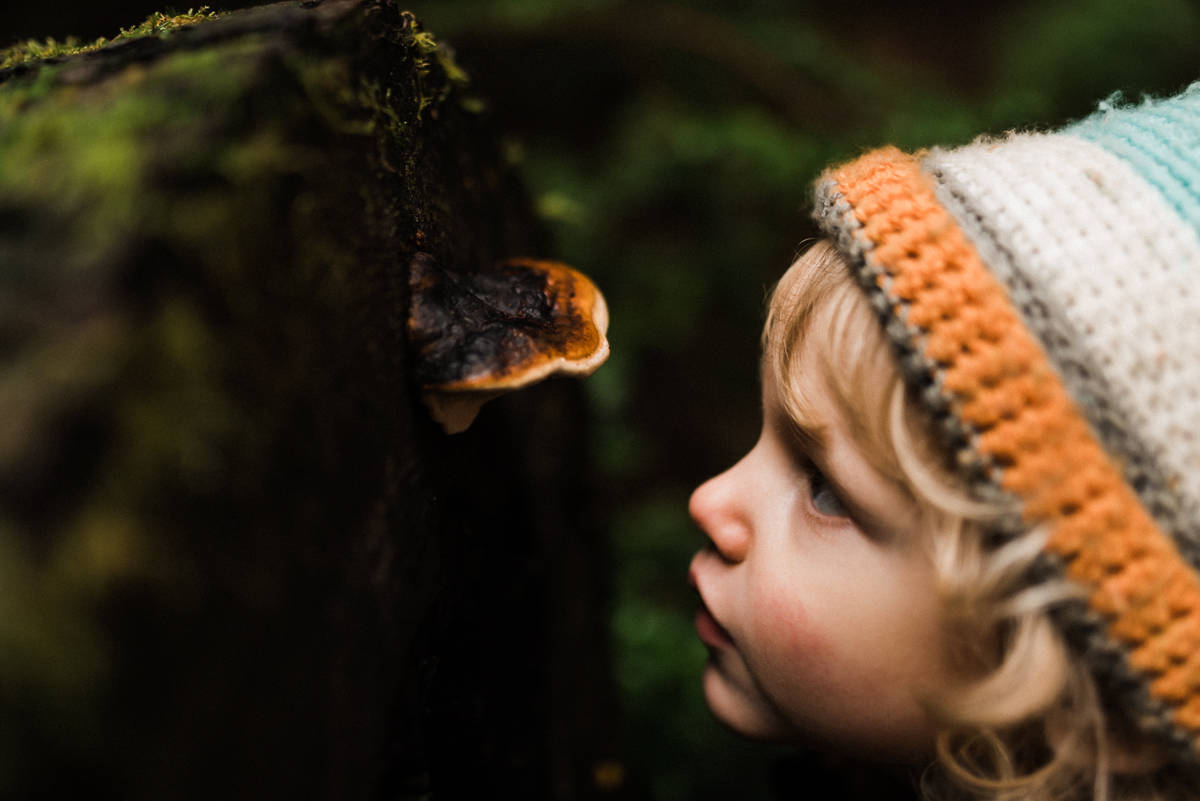
What does adventure mean to you?
Nichole – @coleyraeh
I would say that adventure is a mindset. It’s changing how you think when you approach an activity. Adventure can happen right in your backyard as you look for worms after a good rain. Maybe it can be in your neighborhood when you walk each week and watch how the plants change with the seasons. Adventure can be biking the same trail in your city, over and over again. Or maybe it’s going on a big hike to a waterfall, or going camping, or going to a climbing gym. It can be big, or small, near or far. It’s choosing to view the world through a lens of wonder, wherever you choose to wander.
Lea – @wildstokefam
Adventure is defined as an exciting experience and exploration that deviates from the ordinary. The essence of adventure lies in embracing the uncertainty and the thrill of the unknown, often leading to memorable and transformative experiences. Simply reading under a tree at the park can be an adventure. As a society, we have gravitated towards a sedentary lifestyle. Even in traditional schools, kids don’t get the chance to spend much time outside or being active. The days of kids running wild and free and learning through play are limited. I saw this firsthand for myself when I was an elementary school nurse. The 4-year-olds seemed to spend more time waiting in lines and being contained in a group than actually playing outside or doing typical 4-year-old tasks. Nature is vital for kids and adults alike, as is adventure!
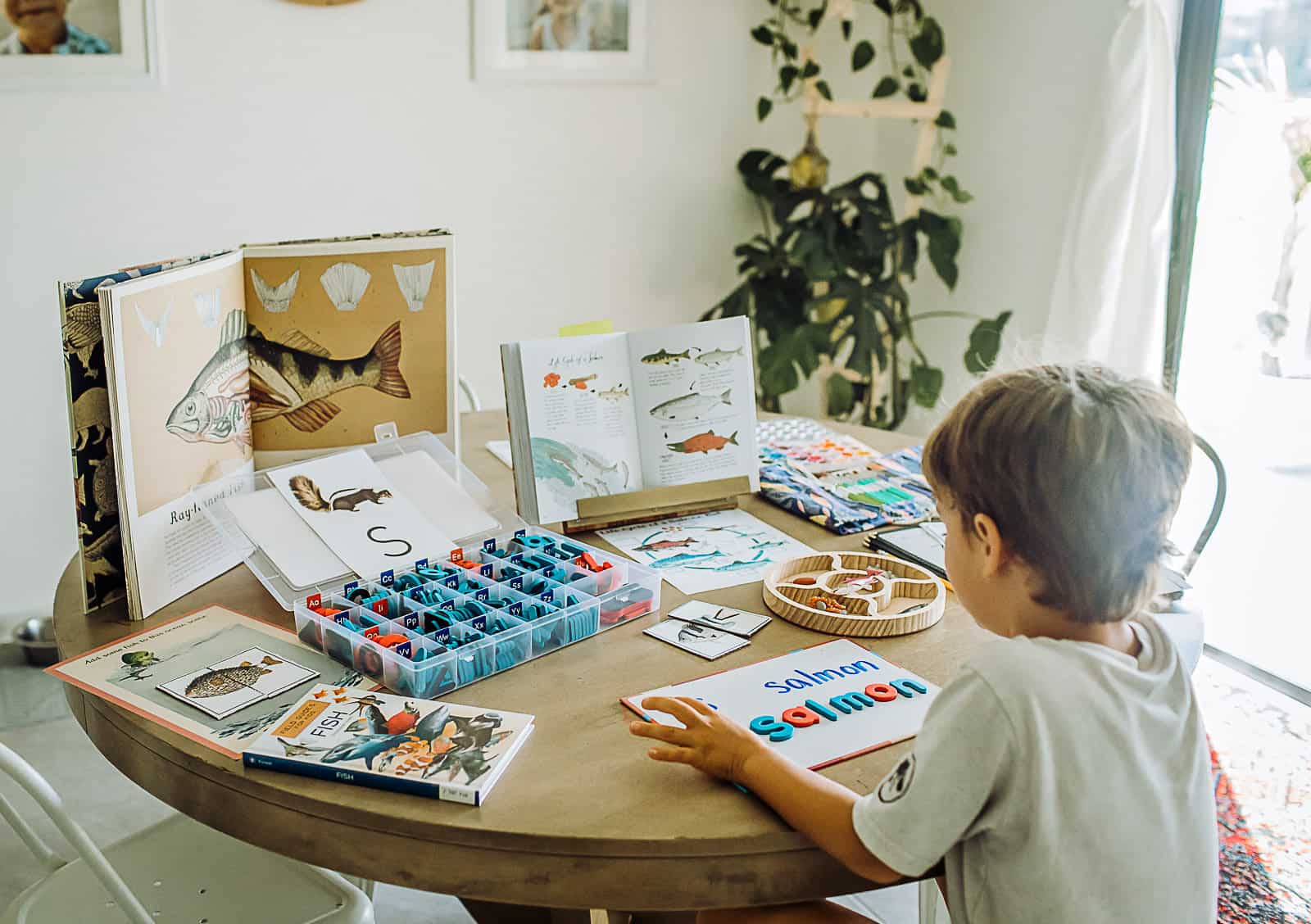
Incorporating nature into your schooling
Incorporating nature into schooling (whether homeschooling or traditional schooling), can be a transformative and enriching experience for both parents and children. By getting outside into nature and embracing the great outdoors, you not only provide a dynamic and engaging learning environment but also foster a deep connection with the natural world around you.
Here are some creative ways to integrate nature into your homeschool curriculum, no matter the age of the child or grade level, put together by Lea (@wildstokefamily).
Math
- Measure items in nature
- Create a sundial outside
- Search for shapes in nature
- Complete arithmetic outside using rocks, twigs, leaves
- Build a fort and talk about angles, shapes, steps, etc.
- Visiting a farmer’s market and having a child weigh produce, count money, and learn values
Science
- Learn about the life cycles of animals. Observe the ones that can be found in your area in the wild or at a local nature center. Visit those that are a bit more exotic at a zoo, aquarium, or while traveling.
- Creating a nature box with interesting items found outside and keep them in a keepsake box (e.g. feathers, seashells, sea glass, and dried insects like dragonflies and beetles)
- Nature journal: older kids can focus on more in-depth science investigation and learn scientific names, habitats, etc.
- Forage in the woods, the beach, the city
- Do some nature-based outdoor STEAM activities and science projects
- Visit a local education center or outdoor children’s museum for hands-on science
- Start a garden (or visit a botanical garden) in order to learn about plants and the growing cycle
- Set up a weather station in your backyard with simple instruments like a thermometer, rain gauge, and wind vane. Keep a journal to record daily observations and weather patterns.
- Turn your backyard into a birdwatching haven. Provide binoculars and bird identification guides, and challenge your kids to identify different bird species.
Art
- Painting outside (plein air painting)
- Creating art with leaves, twigs, and items found outside
- Nature journaling
- Making nature paintbrushes
- Creating seashell crafts, such as necklaces
- Making mandalas using nature items, crafts, etc.
- Paint kindness rocks
- Creating art structures out of recycled materials
- Making leaf and/or flower crowns
Language arts
- Nature journal, nature poetry
- Creating your own park review guides
- Writing a short story about an adventure
- Reading outside in your yard or at a park
- Visiting your local library
- Learning to spell with wooden or magnetic letters
- Spell outside with sticks, leaves, rocks
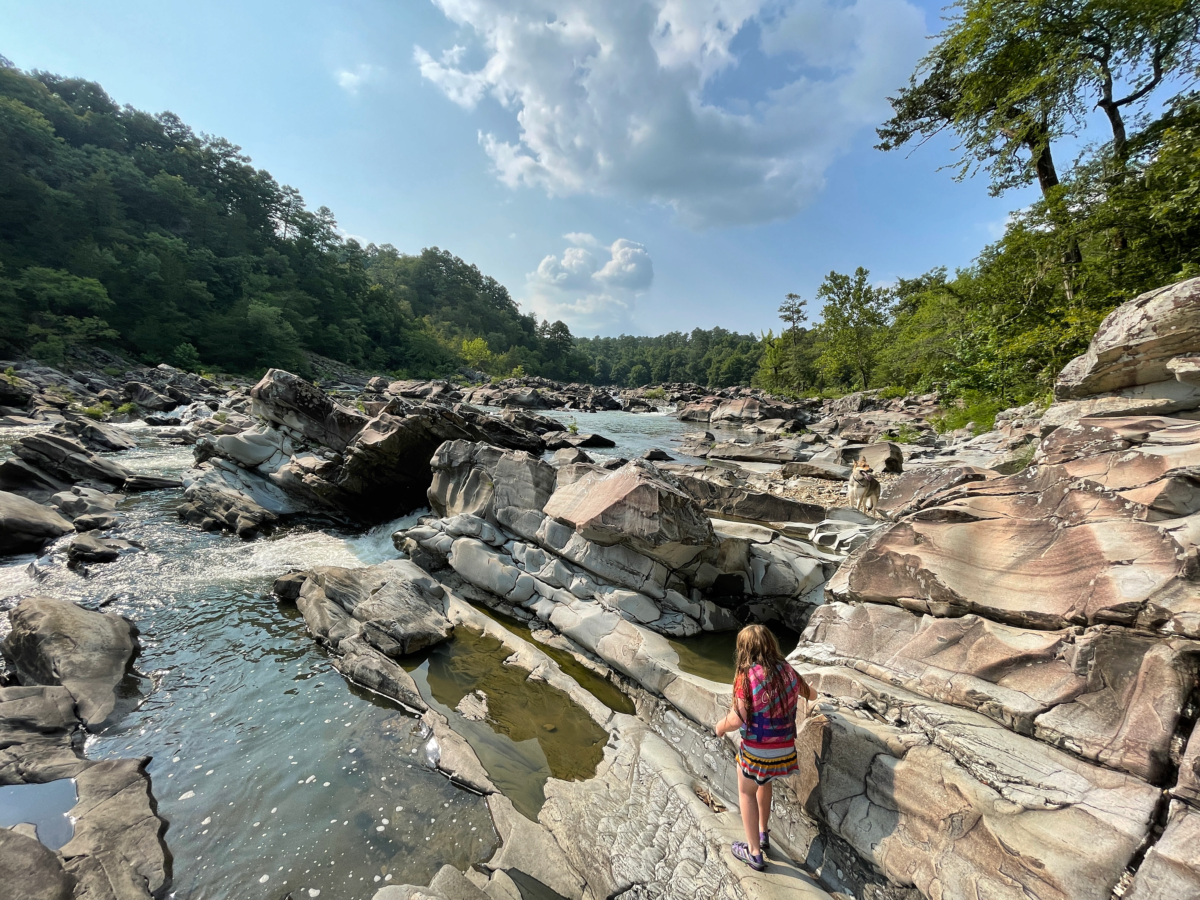
Incorporating adventure into schooling
If you’re looking for ways to incorporate more adventures into your homeschooling (or simply add more adventure to your daily life), here’s a great starter list from Nichole (@coleyraeh) to help spark some ideas for ways to get out the door and learn in a whole new way!
Outdoor adventure – close to home
- Explore nature in your own backyard
- Plant a garden
- Go for nature walks in your neighborhood
- Visit a local nature trail or park
- Visit a garden center at different times of the year
- Visit a local farm or farmer
- Volunteer at a community garden
- Play at a skatepark
- Drive RC cars outside somewhere
- Go for a bike ride on a trail or around your neighborhood
- Rent a kayak, canoe, or paddle board if that’s available
- Go on a mural scavenger hunt around your town or city
- Try geocaching
- Play in a creek. Like this.
Indoor adventure – close to home
- Go to a movie
- Visit a local museum
- Take a tour of any local historic sites or homes
- Visit the library
- Try a new restaurant, especially if it’s a type of food that correlates to something you’re studying!
- Take “school” to a coffee shop
- Go to a play or musical
- Go see the symphony (many cities will have children’s theater days for shows and for the symphony)
- Check out trampoline park
- Go go an indoor climbing gym
- Visit a bowling center and/or arcade (pro tip – let them use their own money at the arcade, and don’t forget about Kids Bowl Free programs in the summer)
Outdoor adventure – bigger and farther
- Go camping at a campground or state park cabin or yurt
- Go on a bigger day hike to something neat like a waterfall
- Canoeing, kayaking, stand up paddleboarding
- Mountain biking on bigger trails or at a pump track
- Find a climbing club or group to go climbing outdoors with
- Try a via ferrata if there’s one nearby, if not, try an adventure obstacle course or zipline
- Visit a new to you state or national park
- Snorkeling – in a creek, a lake, or even the ocean
- Paddle camping – hauling everyhing you need to camp in your canoe or stand up paddle board.
- Explore something unique to your state: like crystal digging in Arkansas.
- Visit a zoo or wildlife sanctuary
- Visit gardens and botanical centers
- Check the calendars for nearby state parks, national parks, historic sites, and cultural sites
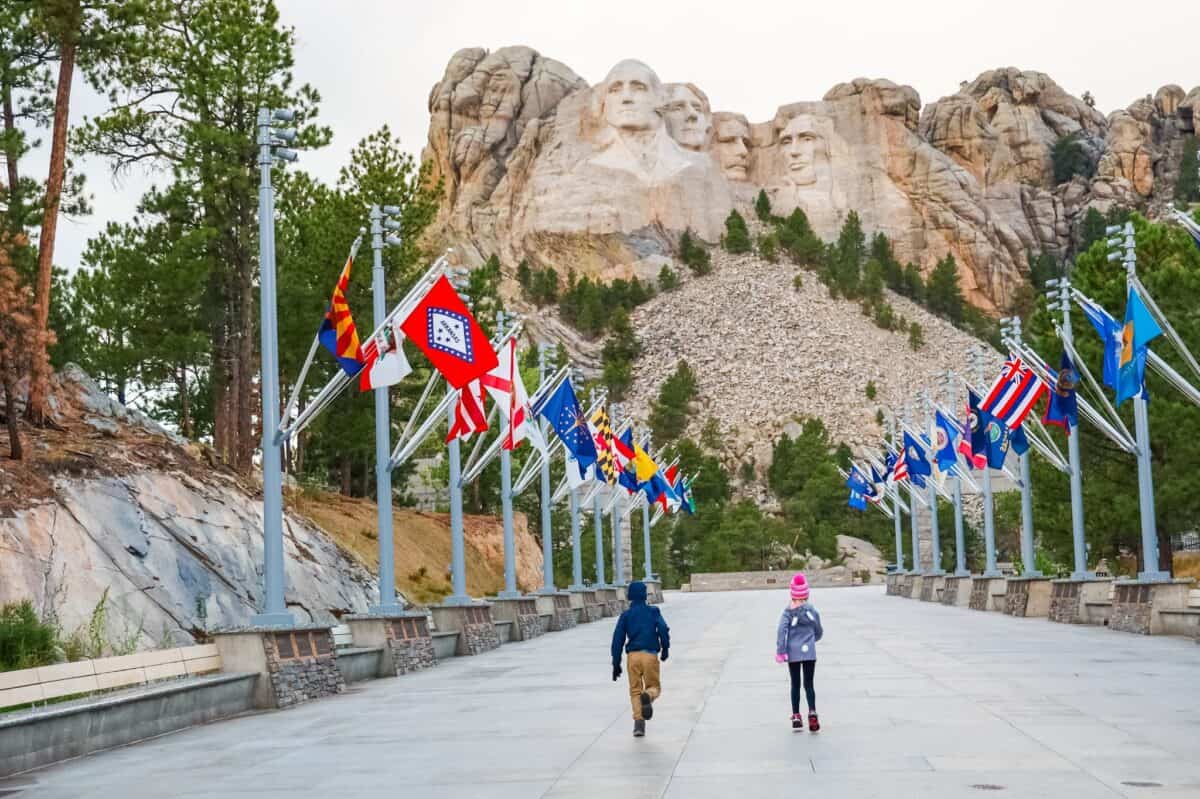
What does adventure schooling look like for you?
Nichole – @coleyraeh
My kids are now 12 and 9, so while we’ve been doing this a while, it doesn’t look that much different as we enter the teen and tween years, but our adventures are bigger. I think that it’s often easy to feel pressure to let go of the hands-on and experience-based learning as the kids get older and move closer to middle school and high school. However, in my experience, those are the opportunities for the adventures to get even bigger. It’s also when you begin to see some fruits of your labor from the years you put in when they were little, when they begin to make observations or recall things they’ve learned while out in the world.
As we’ve always done, we incorporate adventure schooling into our homeschooling schedule through our weekly adventure day, which is sometimes a canoe trip, a SUP trip, hiking, mountain biking, or perhaps even a trip to a museum or art gallery. These are bigger adventures than we did when they were younger. It’s taken us a while to get here and I’m so proud of the adventures that we’re now able to do. I intentionally set aside time for real world adventures and experiences, whether or not they’ll have any measurable academic value. Not all adventures need to be educational. Sometimes, they’re just for fun! Those experiences are what etch into our memories and keep the spark of curiosity burning.
Lea – @wildstokefam
Each week, we learn a new letter (my son is only at a Pre-K/Kindergarten level, so I tailor our work towards him and my 2-year-old). We go over the sounds and tie in a book and an animal or nature theme to that letter. I try to choose things that he is interested in because, at the end of the day, that’s how he will retain what I am teaching. Right now, my son loves fishing and wants to be a fisherman when he grows up, so we spend a lot of time on/near the water.
Not all of our time is spent outside. I do teach him in the house at the start of the week. We read our book, practice writing letters, do arts and crafts. Every Friday is our adventure day. We go on a field trip to either a learning center or simply outside. I create things to do in nature that still tie in with what we are learning during the week. He never complains and never thinks of it as “school.” He is simply out in nature, playing and learning at the same time. We fish almost every weekend already, so my next plan is to catch a fish large enough to keep, learn how to clean it, and make it for dinner.
Every week is different, some harder than others, but I try my best to let my creativity spark fun ideas to incorporate school, outside.
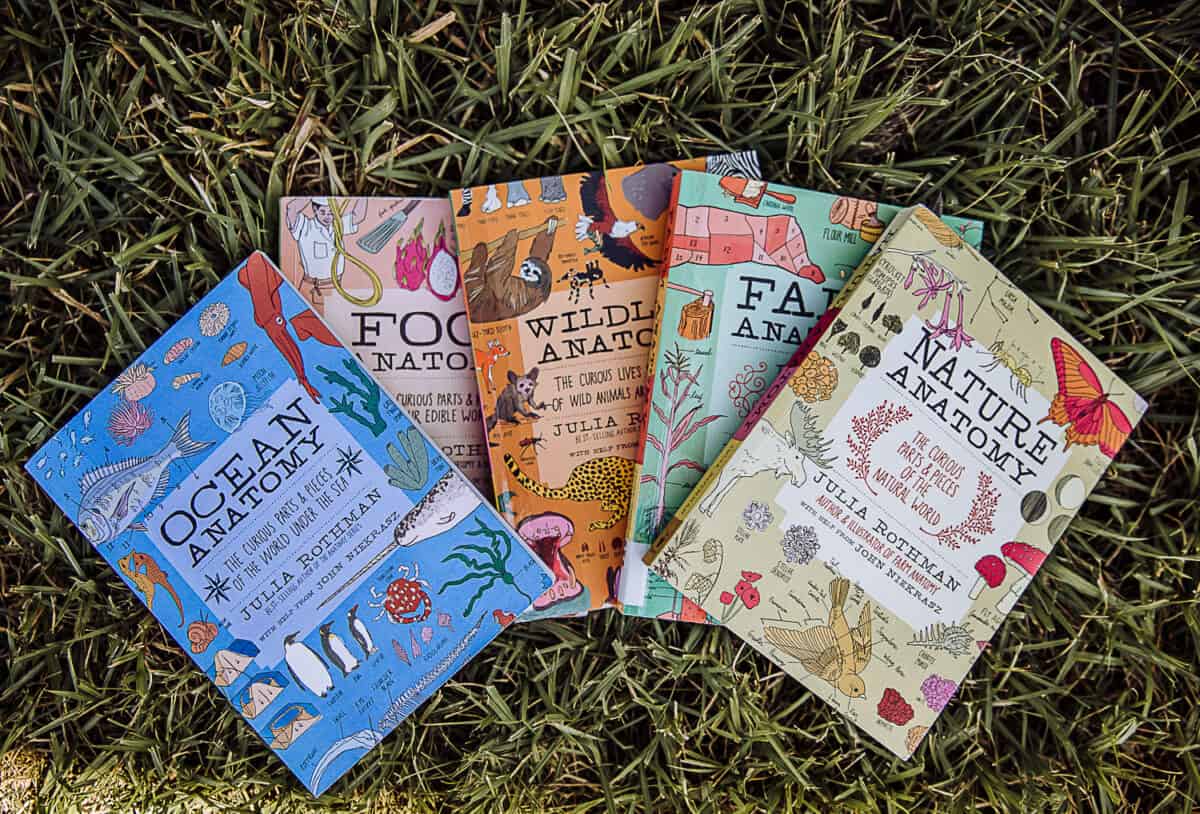
Favorite adventure schooling gear and gadgets
Lea – @wildstokefam
I am a sucker for all the coolest homeschool gadgets and outdoor gear. I can write an entire article on my favorite gear but here are my top favorites. Don’t forget to shop second-hand. You’d be surprised what you can find at children’s consignment stores, Facebook Marketplace, and yard sales.
- Magnetic letters – we use these to help with phonics, learning new words, and spelling.
- Julia Rothman collection – since we don’t have one set curriculum we follow, we plan my unit studies a week at time and incorporate nature studies from her books. The artwork is lovely, and the information is perfect for my son.
- Life Cycles Kit – we use them every week, and even my 2-year-old loves them. She focuses on matching them to their selective card while my son practices the actual life cycles.
- Adventure kits – binoculars, nets, whistle, compass, flashlight, net
- Pocket microscope for kids – perfect to take with us on the go to get an up-close look at everything around us
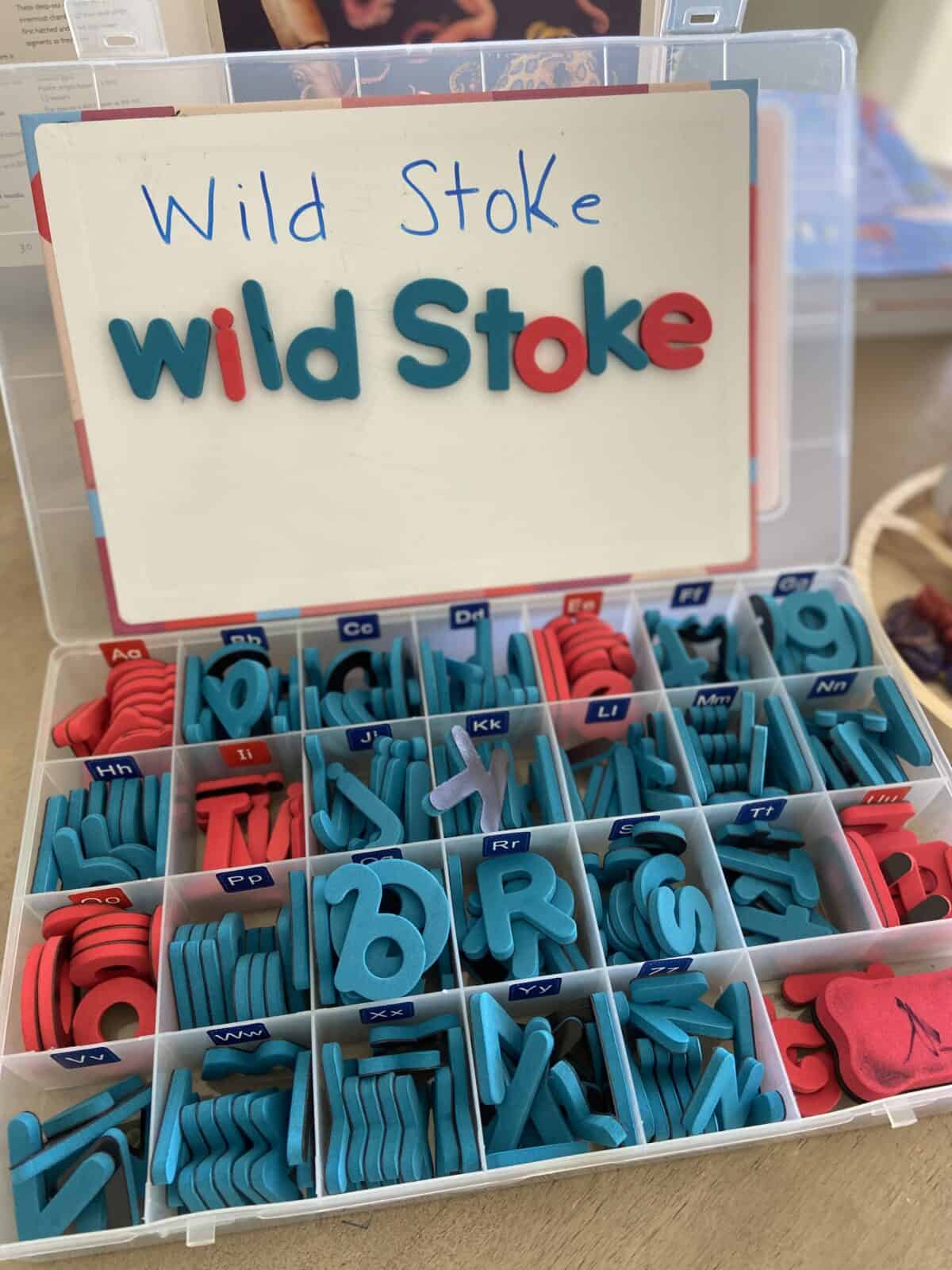
Adventure schooling for all
Adventure schooling, while usually referred to when talking about homeschooling, is not exclusive to homeschooling families. Learning through adventures is a versatile approach that can be seamlessly integrated into the lives of all families, regardless of whether children attend traditional schools or are schooled at home.
Embracing the spirit of adventure learning involves recognizing the educational potential in activities and outdoor exploration. Even for families with packed schedules, simple changes like turning weekend hikes into interactive biology lessons or transforming a camping trip into a history exploration can make a significant impact. The key is to view the world as a vast classroom where learning is not confined to textbooks but unfolds organically in the midst of nature’s wonders.
For families with children in traditional schools, you may need to reach out to your child’s teacher to plan adventures based on what they’re learning. As a parent, you can supplement their education by dedicating weekends or holidays to family adventures that blend recreational activities with educational components. Whether it’s a visit to a historical site, a day at the beach exploring marine life, or a camping trip under the stars, each adventure becomes an opportunity for hands-on learning. By weaving adventure into the fabric of family life, all children can benefit from a holistic education that transcends the boundaries of traditional schooling.

Have you ever considered adventure schooling?
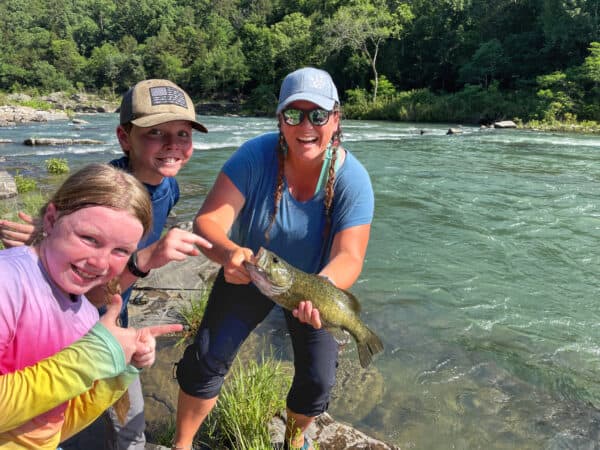
Nichole
Nichole is a writer, content creator, and family travel and adventure influencer residing in southwest Arkansas. Though she and her husband are originally from the Midwest, they’ve lived in Arkansas for ten years now and are thrilled to call it home. They have homeschooled their children from the beginning of their educational journey. They have a now 12-year-old son and 9-year-old daughter, along with a one-year Direwolf Dog puppy. Nichole is an avid outdoor adventurer and road tripper and has been taking her kids on adventures by herself since they were infants, it’s all part of what she calls being responsibly brave. She is also on the Executive Team for Run Wild My Child and has contributed to Wild and Free. Be sure to follow her on Instagram and Facebook to stay up to date with all of their shenanigans.
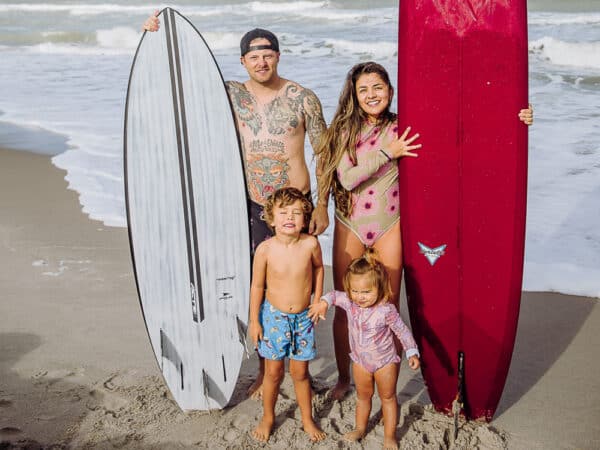
Lea
Lea is a mom of two adventurous kids and wife to her surfer husband Brandon. She is an Army veteran, Registered Nurse, photographer, and small business owner. Lea has lived in Hawaii, New Mexico, and now resides in Florida, where she and her family are enjoying endless ocean adventures. She has traveled to Costa Rica, South Korea, and many states across the US. Lea and her family love to surf, fish, hike, skate, and travel to new places. She is passionate about teaching her kids about nature and protecting our planet.
You can find Lea online in the following locations:
Instagram: @oceanmamalea
Website: Wild Stoke Fam
RWMC posts: Lea Reynolds
Comments
3 responses to “Navigating the World of Adventure Schooling”
wish i could be again a child and complete my schooling from there. i mean i am a Nature lover but the way you have made learning possible there is amazing.
[…] iconic experience when you stay at Titan Ranch. A stay with an unmatched story. If you’re an adventure schooling family, this is an excellent immersive learning experience. Happy […]
[…] curiosity with a heavy emphasis on nature study, outdoor adventure and exploration. We call it adventure schooling. The way we weave in nature study has sometimes been an in-depth unit study on a specific topic, […]

Leave a Reply